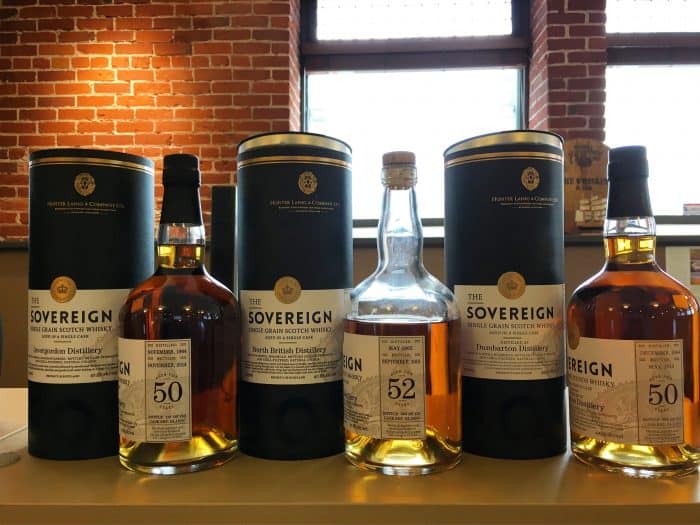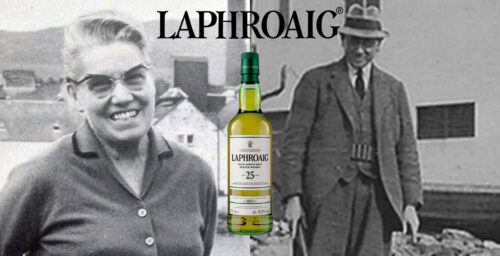Single grain whisky for a long time has been considered Scotland’s dirty little secret, something that wasn’t widely accepted as ‘proper’ Scottish whisky. In fact, single grain whisky is deeply tied into the fabric and history of Scottish whisky. Walk into any bar in Scotland or the rest of the world and you will find a certain bottle of whisky sitting on the shelf. This whisky is named after a famous Scottish bird, is one of the most recognisable icons of Scottish whisky in the industry today and is many people’s first foray into the world of whisky. This whisky is a blend, a mix of single malts from various distilleries and single grain whiskies, usually being 30% single to 70% grain. Often the grain is considered either a base or bulking agent for the blend, providing distillers a chance to bulk up the production of often substantially cheaper blends.
In the eighties there was a grain boost coinciding with an increase in demand for blended malts and this led to an explosion in grain distilleries across the lowland region. The only real grain distillery that was found north of the lowland region was the Loch Lomond distillery. However, with the emergence of new distilleries looking for an alternative product to cement and provide market visibility this is changing fast. There are the staples of the grain industry, North British being one, giving Edinburgh a smell of popcorn or malted bread when they begin distillation. Being an Edinburgh native myself, this is something very much reminiscent of my childhood.
Single grain is distilled to a much greater industrial level than single malt; this is perhaps one of the reasons why it is much forgotten and put to the side. Single grain distilleries are often described as chemical plants as the stills themselves are called column stills, designed to run 24 hours a day 7 days a week, producing a much more resilient and robust new make spirit. This spirit shares some of the cereal aspects of single malt whisky new make but is often slightly higher in alcohol percentage (70% to 94.8% depending on the cut).
This can then be placed in casks and left to mature until the whisky is ready (3 years minimum as with single malt) or it can be passed through various filters and barriers until the flavour molecules have been removed and you are left with GNS (Grain Neutral Spirit) which can then either have a flavourless chemical tracer added and turned into vodka (Smirnoff for example) or can be sold to gin distilleries for them to infuse and create botanically infused gin. This multifaceted approach could be the reason why single grain whisky has been Scotland’s dirty little secret that no one really wants to acknowledge or talk about.

Compare this to the image most single malt distilleries put across which is that of an idyllic cottage in the middle of nowhere, stream bubbling softly and great big copper pot stills hidden away. It is easy to see why some may consider single grain to be an industrial form of whisky and single malt as more of a ‘artisanal’ product.
Another reason why grain is seen as a lesser product is that the base components for single grain whisky are malted barley, yeast, water and an additional un-malted grain. Before distilling can commence a process known as ‘all grains in’ commences; this involves mixing the malted barley with the un-malted grain (which can range from maize to barley). This process is part of the reason that such a distinctive smell is produced during single grain distillation.
I believe that single grains from a bartending perspective offer a huge variety of flavours and possibilities when playing around with cocktails. They can often be quite misleading when tasted, starting with quite harsh and astringent aromas (especially if they are cask strength) then mellowing out and becoming something quite unique in the glass. As a regular whisky drinker, I like to peek behind the establishment and see what lurks in the shadows. Grain whisky presents a wonderful aroma and complexity that some might find lacking in some single malts. Also, as a Scotsman I’m always on the look out for a bargain; that is something that single grain unreservedly is, as you can pick up something quite unusual for a price that will not make your eyes water, something that is becoming more and more a rarity in the industry.
So I urge you, the next time you visit a whisky bar, have a look, and if by chance you spy a single grain whisky sitting on the shelf all on its own hiding behind its bigger single malt brothers, try it and see why, for me, single grain is not Scotland’s dirty little secret but instead one of Scotland’s best keep whisky secrets that is slowly being discovered.








